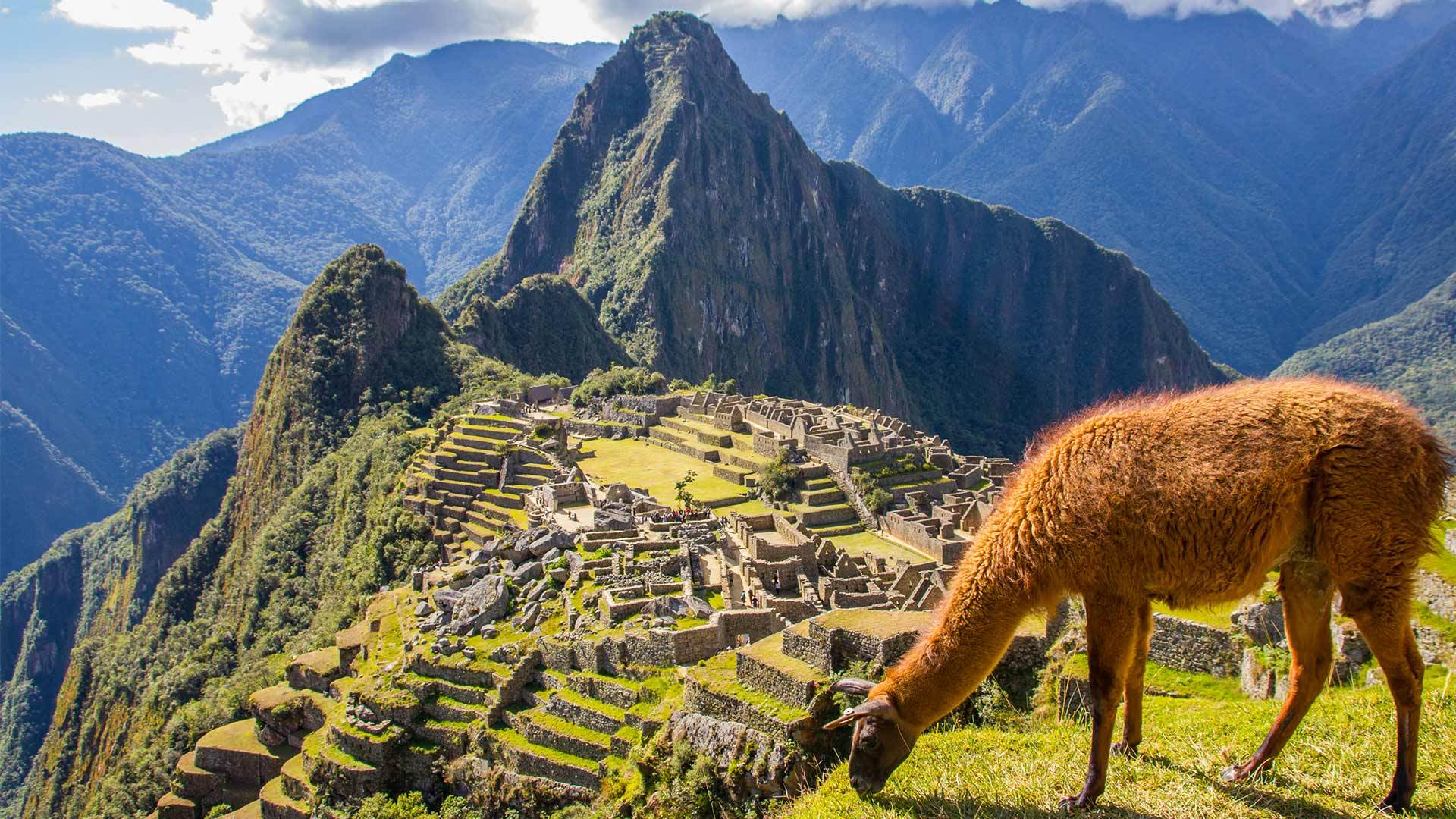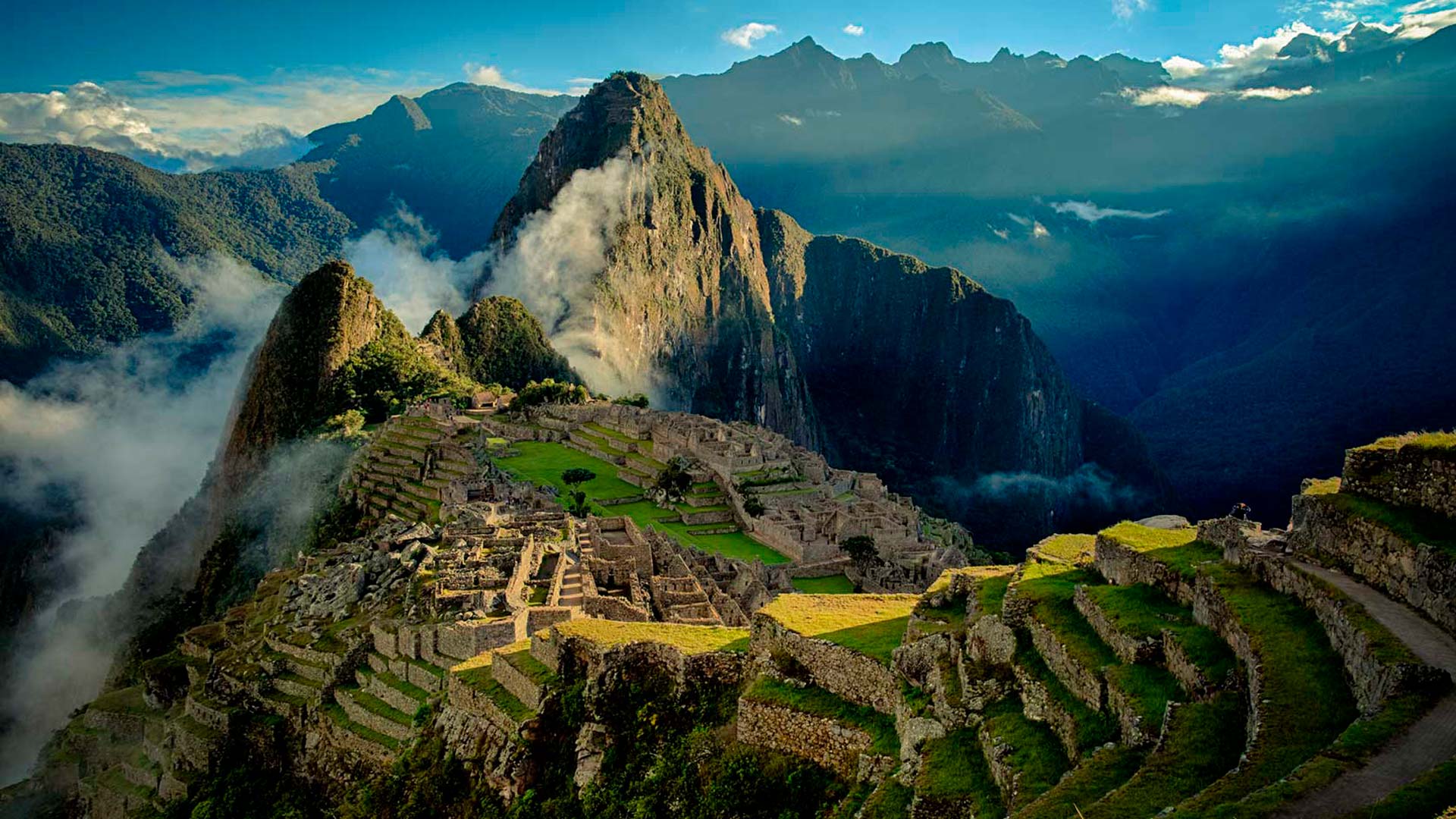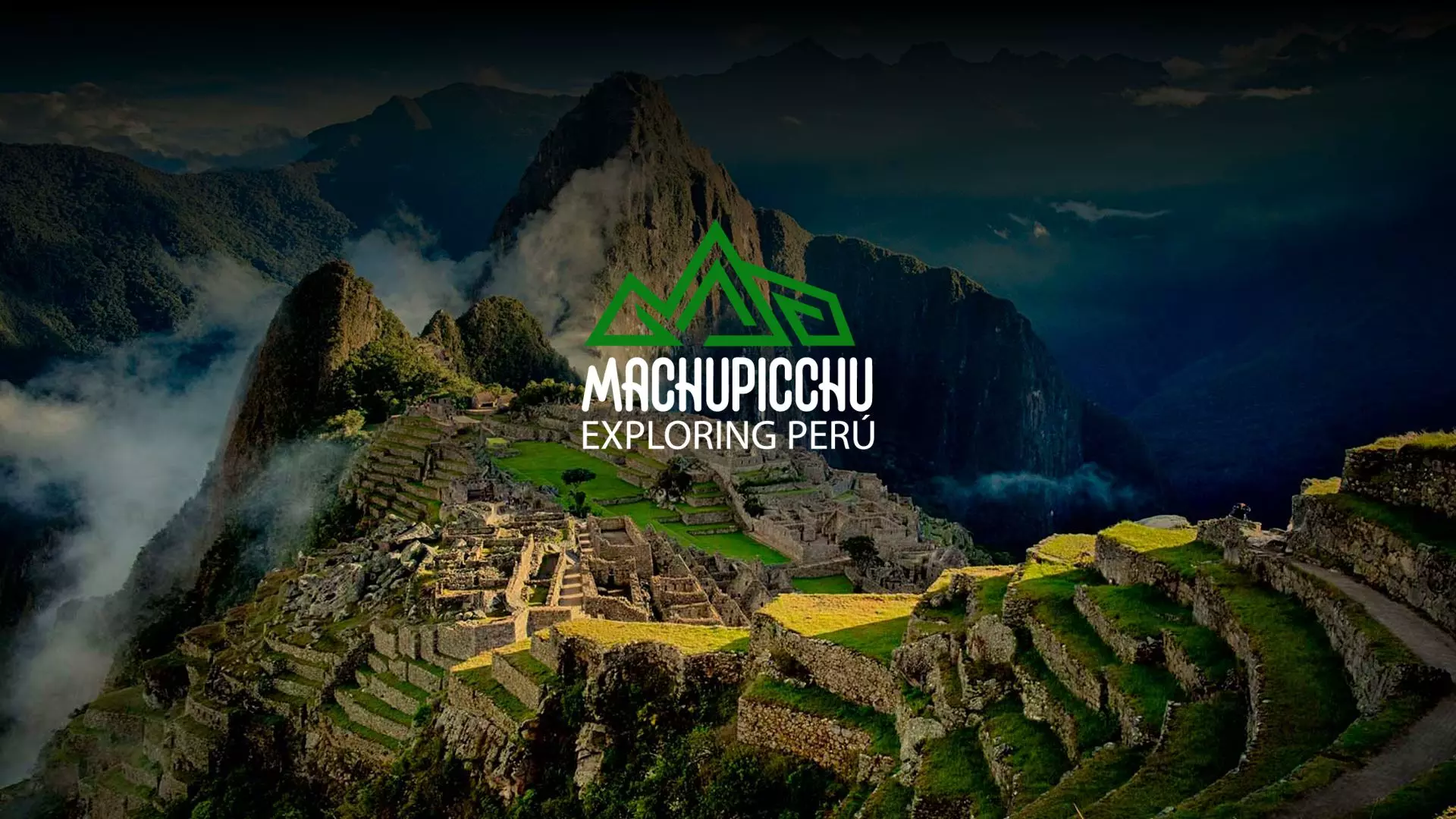Menu



4 Days / 3 Night
50 miles
4/5 Easy
3300 - 5000 msnm
Trekking & Culture
Up to 8 people
Peru’s best-known hike visited by thousands of tourists every year. The classical 43-km trek leading to the Sacred Inca City of Machu Picchu combines the visit of mysterious archaeological sites, amazing mountain scenery and lush cloud forest rich in Andean flora and fauna. Machu Picchu is reached at sunrise on the fourth day.
Meet & greet with other guests where you receive important information for a great trekking experience.
Between 5.00-05.30am our private transport and staff will pick you up from your hotel. We drive to Piskacuchu (2700m/8856ft), a community located on the 82nd kilometer of the Cusco –Machupicchu railroad, which is the starting point of the Inca Trail. We begin our hike by crossing the bridge over the Urubamba River and walking along its left shore as it flows northwest along the Sacred Valley. Following the trail along a flat terrain, we arrive in Miskay (2800m/9184ft), to then ascend and finally see, from the tallest part of an overlook, the impressive Inca city of Llactapata (2650m/8692ft). We continue trekking along the valley created by the Kusichaca River, gradually climbing for about five hours until we reach the community of Wayllabamba (3000m/9840ft), where we set our first camp. All along the way we enjoy spectacular views of the Vilcanota ridge on the opposite side of the Urubamba River, where the impressive Veronica peak reigns at 5832 meters above sea level. Not to mention the diversity of wild flora and fauna that can be found all along the valley.
Total distance : 12 km (7,47 miles)
Estimated time :5-6 hours
Maximum altitude: point 3,000 m (9,840 ft)
Campsite altitude: 3,000 m (9,840 ft)
Places to see: Ollantaytambo, Piscakucho, km 82, Kanabamba, Llactapata Incan Site, Tarayoc lunch spot, Hatunchaka, Huayllabamba.
We wake up at around 6:00 am and after breakfast, we begin the most difficult part of the trek, which consists of an abrupt and steep ascent that stretches for 9 km. Along this climb, the landscape changes from sierra to puna (a dry and high area with little vegetation). On the way to the first mountain pass, the Abra Warmihuañusca (Dead Woman´s Pass – 4200m/13776ft), we may see domesticated llamas and alpacas grazing on ichu, one of the few plants that grow at high altitude. We also cross an area of the so called cloud forest, which is the habitat for many different kinds of birds like hummingbirds and sparrows, and the Andean bear, which is also called the Spectacled Bear (Tremarctus Ornatus). We advise that on this day specially, your daypack is well stocked with candies, chocolates and coca leaves that will keep your sugar level high, and help with altitude sickness. Immediately after the pass, we descend into the Pacaymayo valley (3600m/11808ft), where we camp after approximately 7h of hiking.
Total distance: 11 km (6,84 miles)
Estimated time :6-7 hours
Maximum altitude point: 4,200 m (13,776 ft)
Campsite altitude: 3,500 m (11,480 ft)
Places to see: Huayllabamba, Yunkachimpa, Tres pierdas, Llulluchapampa, Warmihuañusca(Dead woman Pass), Pacaymayu.
This day is the longest but also the most impressive and the most interesting, due the number of archaeological sites and the lush cloud forest area that we cross, so rich in Andean flora and fauna. From Pacaymayo we climb to the second pass, the Abra Runkurakay (3970m/13022ft). Halfway up, we stop to visit the archaeological complex with the same name. This site, located at 3800m/12464ft, consists of a small oval structure that is believed to have served the purpose of a watchtower. After going over the pass, we descend towards Yanacocha (Black Lagoon) and enter the cloud forest to finally arrive at Sayacmarca (3624m/11887ft). This is a beautiful complex made up of a semicircular construction, enclosures at different levels, narrow streets, liturgical fountains, patios and irrigation canals. Continuing up an easy climb, we arrive at the third pass, the Abra Phuyupatamarca (3700m/12136ft). Along this climb we can appreciate the magnitude of the Incas´ ancient craft, by walking along paths semi-detached from the mountain, and seeing rocks that fill up ravines in perfect order, saving the trail from the multileveled Andean geography. We go through an Inca tunnel to later arrive at the aforementioned pass and down to the complex of the same name. This is one of the most complete and best-preserved archaeological complexes along the Inca Trail to Machupicchu, and is located on the highest point of a mountain. Curiously, Phuyupatamarca means ¨town over the clouds¨. From above, one can observe a sophisticated sacred complex made up of water fountains with solid foundations, and also impressive views of the Urubamba River valley. We continue our trek down the long descending stone steps that lead us to Wiñaywayna (2650m/8692ft), an impressive Inca complex made up of an agricultural center with numerous terraces, a religious sector and an urban sector, close to which our camp is located. This campsite hosts a trekker lodge, a bar and bathrooms with hot shower facilities. After visiting the impressive archaeological site, we enjoy our farewell dinner at our camp.
Total distance: 16 km (9,94 miles)
Estimated time: 8 hours
Maximum altitude point: 3,900 m (12,792 ft)
Campsite altitude: 2,650 m (8,692 ft)
Places to see: Pacaymayu, Runkurachay Incan Site, Runkurakay pass(3900 meters high) Sayacmarca Incan Site, Conchamarca Incan Site, Chaquicocha Lunch spot, Phuyupatamarca incan site, Intipata incan site, Wiñayhuayna incan site.
On this fourth and last day we get up at 4.00 am to leave Wiñaywayna an hour later and climb to the Intipunku, or The Sun Gate. This will take an hour of hiking along a trail of flat stones on the edges of cliffs in highland jungle. From this fabulous spot, we may see the sunrise over the sacred citadel of Machupicchu. From Intipunku we descend into Machupicchu, and 40 minutes later we enter the citadel from the highest point through the ¨House of the Guardians¨. We then descend to the control point where we register ourselves and leave our backpacks. We immediately begin a complete guided tour of the Inca citadel that will take approximately two hours. You will then have free time to walk around, climb the Huaynapicchu Mountain, where one can experience spectacular views of all of Machupicchu, the valleys and mountains that surround it (please note that there are only 400 visitors allowed per day), or visit the Temple of the Moon or the impressive Inca Bridge. In the afternoon, we meet in the town of Aguas Calientes where, if you like, you can visit and relax in its hot springs. From here we take the train back to the city of Cusco, where we arrive after nightfall.
Total distance: 4 km (2,49 miles)
Estimated time :2 hours
Maximum altitude point :2,700 m (8,829 ft)
Places to see: Wiñayhuayna, Intipunku(Sungate), Machupicchu city, Huaynapicchu or Machupicchu Mountain(optional), Aguas Calientes or Machupicchu Town.
Add On The Nazca Lines, The Amazon Rainforest, Colca Canyon, And Other Extension Tours or Treks Let Us Know.
IMPORTANT NOTE :
Appropriate Clothing Along This Hike
Hiking pants and T-shirts are recommended during the day, complemented by sweaters, fleeces and waterproof jackets. It is very convenient to have light raingear available in the daypack (rain poncho or jacket and/or rain pants) as the weather changes easily and rains can suddenly occur. At night, warm clothing is required, down jackets can be useful, otherwise a fleece and a jacket. During the fourth day (if sunny) and in Machupicchu, convertible hiking pants are useful, as can be switched into shorts if necessary. Machupicchu has a warm climate, getting only cold at night. The rest of necessary implements are included in the “What we recommend that you bring on Inca Trail ” list.
AVOID DISAPPOINTMENT – BOOK YOUR INCA TRAIL HOLIDAY IN TIME!!
Over the last few years, the Peruvian government has imposed increasing restrictions on tourism on the Inca Trail in order to protect it from overuse. The aim is to minimize ecological impact and erosion, mainly by having limited access and improving the quality of the operators. There are now only a very limited number of trekking permits available – 500 per day (around 200 for travellers and the rest for staff) – and they are being issued on a first-come-first-served basis. In order to avoid disappointment we recommend booking well in advance (up to a minimum of 3 months in peak season), unless you are extremely flexible over your travel dates.
VERY IMPORTANT:
The exact information provided by you will be submitted to the governmental institution in charge of regulating the access to the Inca Trail and will be included in the official permit to enter the Inca Trail on the requested date. Should there be any change in the above-mentioned data (ie. New passport number), we kindly request you to inform the Reservation Department at Machupicchu Exploring Peru Tour Operator via email as soon as possible. The government reserves the right not to allow the entry to any visitor whose data are not the exact ones as those in the official permit. Machupicchu Exploring Peru Tour Operator excludes any responsibility for a no entry in case the passenger information has changed without prior notice to us.
SHORT INCA TRAIL TO TREKKING TO MACHUPICCHU 4D/3N 2017 – 2018
To Book: We need at least 02 of you and Leave any day you suit. All Departures 100% Guaranteed If You’re Booked, You are Going !!! To Confirm and Secure the Inca Trail Permits. Send us the filled out booking form as well as a deposit of US$200 per person by Wester Union, Money Gram , Bank Account or Paypal .and you are ready to go.
DISCOUNTS:
Is the Inca Trail difficult?
Great question! The Inca Trail is considered a moderate hike; however, there are a lot of staircases to climb, and the altitude can also affect the body. We recommend renting a wooden walking stick as it helps with your balance and reduces stress on the knees. If you have mobility issues, please let your CEO know during booking.
How many hours will I hike a day?
Make sure you pack your comfortable hiking boots, because it is estimated you’ll be walking six to nine hours for each of the first three days and about two hours on the last day.
What are the requirements to hike the Inca Trail?
To trek the Inca Trail with Machupicchu Exploring you must be over the age of 12, with a moderate level of fitness, and hold a passport that is valid for up to six months.
How high is the trail?
The trek begins at 2,800m (9,186 ft). The highest point you’ll reach on the trek is approximately 4,200m (13,780ft). You’ll also sleep at 3,600m (11,811 ft) for at least one night.
How cold does it get?
It can get chilly due to the altitude. During the Andean winter (May – September) the temperature can drop below zero at night. It can be cool during the summer months too, so we suggest bringing thermal underwear and a warm sleeping bag.
Is altitude sickness common?
It’s impossible to predict who will be affected by the altitude as your ability to adapt can vary from person to person. (We do recommend you undertake the trek in a good state of physical fitness.) Most of our travellers have no problem, as long as they take the time to acclimatize properly. This might include spending a full day in Cuzco (3,249m [10,659 ft] above sea level) and drinking plenty of water.
When is the high season on the Inca Trail?
Hiking the Inca Trail is popular all year round, however May to September is considered the high season. This means that permits can be sold out months in advance. However, if permits are not available, there is an option to walk the Lares Trek, which still takes you to Machu Picchu.
How far in advance should I book my tour?
To reserve a spot on the Inca Trail, we recommend you book your tour at least six months in advance during high season (May to October) and three months in advanced during low season (November to April).
Do I need a permit to hike the Inca Trail?
Yes. We require the following information for the purchase of an Inca Trail permit:
Full name (as it appears on your passport)
Date of birth
Nationality
Passport number
Date of passport expiry (*Must be valid for the date of travel)
Please note that any attempts to modify your personal information will result in the loss of the permit. A refund will not be possible so make sure you double-check your information. As well, there’s a limited amount of permits in effort to preserve the trail.
When do we reach Machu Picchu and how much time will we spend at the ruins?
Reaching Machu Picchu depends on the campsite assigned to your group on the third night. However, many groups will reach the Sun Gate at around 6:00am. You’ll have plenty of time to soak in the ruins thanks to a two-hour guided tour and some free time to explore afterwards.
How do we get back to Cuzco?
After you’ve taken in all the beauty of Machu Picchu, your group will travel by bus to Aguas Calientes and then catch a train back to Ollantaytambo, where you meet you’ll take a bus back to Cuzco.
Is it possible to skip the Inca Trail even if the tour includes it?
Yes! Let us know that you don’t want to hike the Inca Trail when you book. We’ll arrange for you to spend two nights in Cuzco and then take the train to the town of Aguas Calientes. You will rejoin your group at Machu Picchu.
What type of food will be served on the Inca Trail?
Our cooks prepare excellent high-quality meals that are perfect for a day of trekking. The menu usually includes: pasta, rice, chicken, fresh fruit and vegetables, oatmeal, and eggs. If you’re a vegetarian, no problem! We’re able to cater to your needs. If you have any dietary restrictions or allergies, please let us know when you fill the booking form .
What type of accommodation can I expect on the Inca Trail?
We use three-man tents to accommodate two same-sex travellers. There are a few places on the trail where permanent (but very rustic) toilet facilities exist, and when they’re not available, your crew will set up portable toilet tents.
Do porters carry our luggage on the Inca Trail?
Yes! We’ll provide you with a large stuff sac where you can place 6kg of your personal items (including your tent and sleeping bag). Our skilled porters will carry these bags while you hike the Inca Trail. Your other personal items will be stored safely at our hotel in Cuzco. All you need to carry is a daypack containing the things you’ll need during the day like water, camera, sunscreen, or anything else that’s over the 6kg allowance.
Will I be given a sleeping bag and mat?
Great question! Sleeping bags are not provided, so we recommend bringing a compact three-season sleeping bag. You can also rent a sleeping bag in Cuzco; just let us know when you book. We provide our travellers with foam mats, but please feel free to bring your own-self inflating mat if you’d like.
Is purified water available on the trail?
Bottled water can be purchased on day one and on the evening of day three of the trek. However, we discourage trekkers from purchasing bottles as it increases the amount of waste. Instead, we strongly recommend bringing a refillable water bottle, as boiled water will be provided with every meal.
Can I bring my own walking stick?
Yes, as long as it is not a metal-tipped walking stick, as they are not permitted on the trail. You can rent a wooden walking stick from us as well along with additional equipment like sleeping bags and air mattresses.
What is the suggested amount that I should tip the guides and porters?
Tipping is at your discretion, but is always appreciated. If you enjoyed the service you enjoyed from your guides and porters, we suggest tipping between $6-8 dollars a day.

© 2023 Machupicchu Exploring Peru. All Rights Reserved Diseñado por WebCodePeru
WhatsApp us